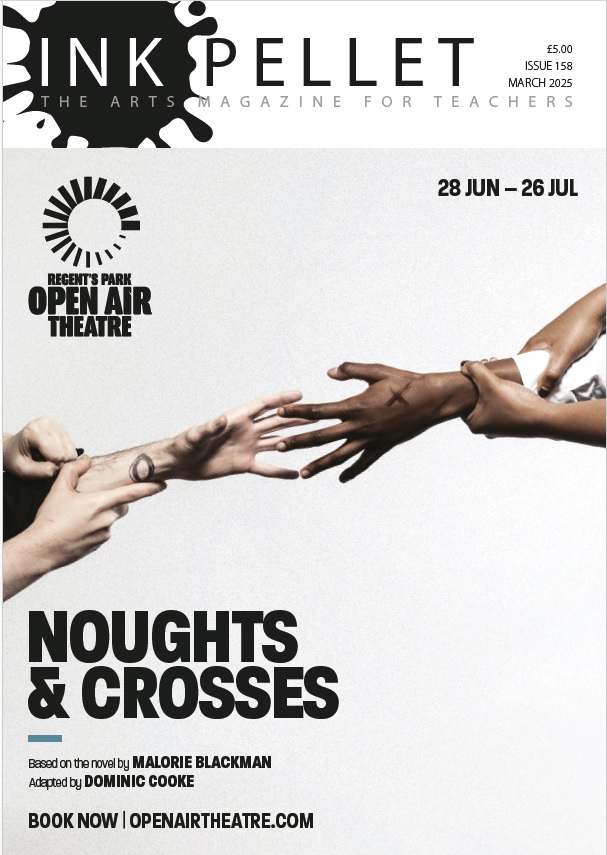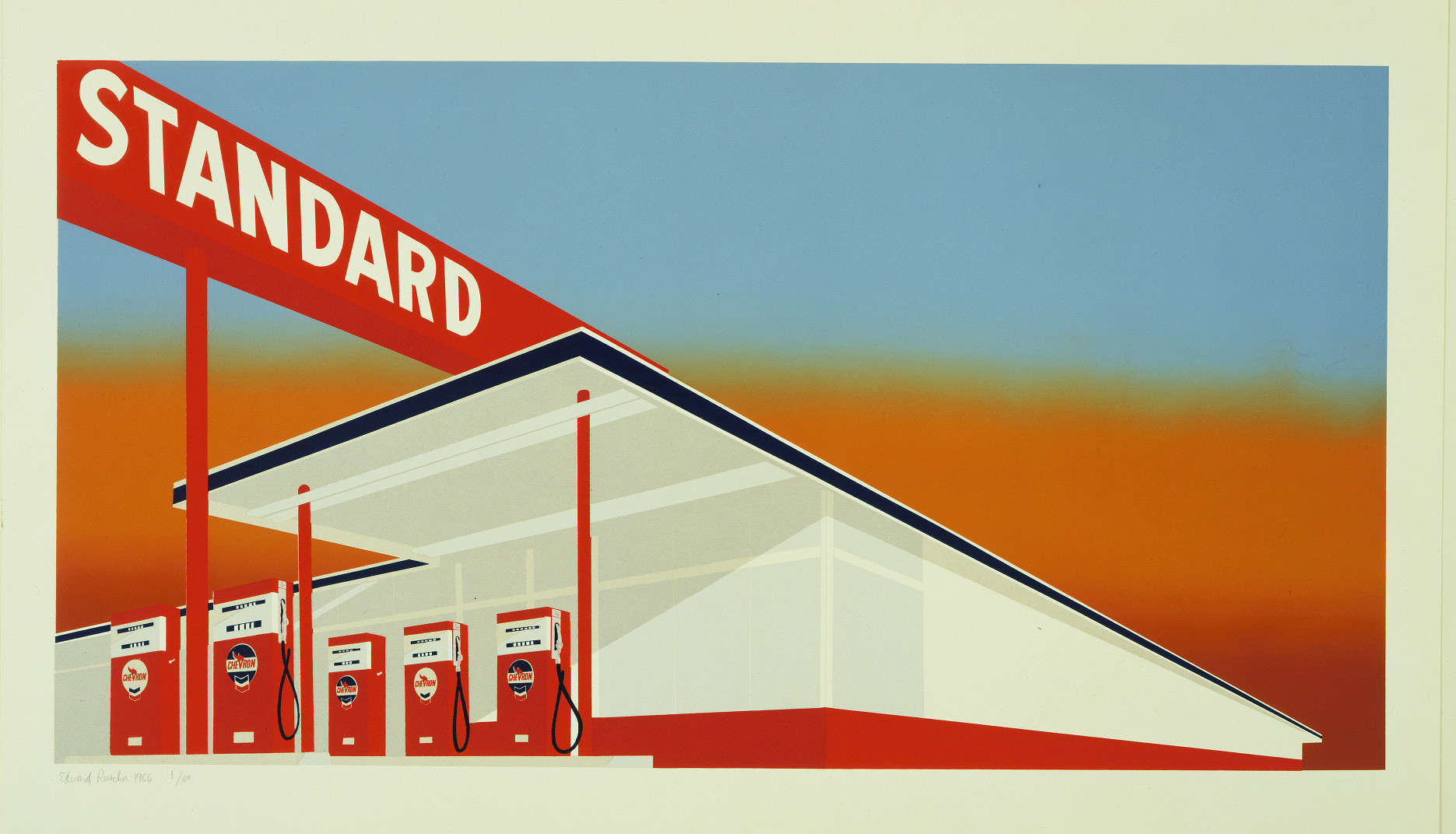Graham Hooper examines the relationship between political events and art, as reflected in the current exhibition at the British Museum.
The centenary of the Russian Revolution is too good an opportunity to miss for art galleries, and rightly so; the impact in design, painting and sculpture, even architecture, is still felt today. That this year, two art surveys (at the Royal Academy and later at Tate Modern) should coincide with two major shows – one dedicated to 1930’s American painting (after the Great Depression – America after the fall, until June 4) also at the Royal Academy, and from the 1960’s onwards, printmaking at the British Museum – is sheer good luck. Current political manoeuvrings on the global stage have made these pairings all the more pertinent and engaging. This is a timely opportunity to discover how the visual arts form part of the bigger picture; geographic, economic and social.
Relations between these two nations have been strained at times, but those tensions (military might during the Cold War or the clamour to reach the moon) have provided stimulus for artists to explore important themes of power, technology and identity. Of all these current exhibitions it is perhaps the British Museums ‘American Dream: Pop to the Present’ that most confidently or comprehensively demonstrates changing attitudes over time.
On entering the exhibition, a quote from American’s iconic art celebrity, Andy Warhol, writ large sets the scene: “Everyone has their own America, and then they have pieces of a fantasy America”. The show goes on to scrutinise this interplay between reality and fiction, as felt and depicted by a range of artists – famous and sadly lesser-known – from the last 60 years. Contrast is very much an underlying theme – national and personal, unique and mass-produced, hopes and fears. The question throughout is very much, ‘when does a dream become a nightmare’?! Alongside this, being America, there are other reoccurring motifs: gasoline, candy, the stars and stripes predictably. There are big names on show, a real treat, from every era of modern art, pop through to hard-edge colour field abstraction to contemporary – works made within the last couple of years.
The focus of this 12-room display, being print, will unfortunately make it less attractive to many an art-gallery visitor, who flock to see signature, individualised and gestural brushstrokes. Printmaking, for all its undeniable surface charm and power, actually is woefully ignored. Yet it is a method of production, with its roots in the commercial world, which has made for some of the most exciting imagery of the modern period. It has attracted artists in part for the ability to create dynamism or subtlety, and in numbers that allow for wider distribution at the fraction of the cost of one-of-a-kind paintings. Collectors like them for this very reason of course. You might be able to own a Rauschenberg print, when a sculpture wouldn’t fit in your lounge and, like his paintings, would be well beyond the budget of most mortals anyway.
IMAGE ABOVE: Edward Ruscha, Standard Station. Colour screenprint, 1966. The Museum of Modern Art, New York/Scala, Florence. © Ed Ruscha. Reproduced by permission of the artist.
The survey makes clear the seminal events of the past six decades: space travel, the AIDS epidemic, political assassinations, race riots – turbulent times indeed. All of these have provided a rich material and a sense of urgency for those concerned with changes in society. Pictures are a way of both recognising (and describing clearly) as well as responding (expressing the feelings and thoughts of a broader society). Photo-silkscreen, for instance, allows for a scale and degree of realism, and created with relative ease. For a painter otherwise it would take a level of and particular skill, as well as quite some time, to achieve anything near the same result.
Each room considers a different time, subject or technique as a focus for the work, though it is generally chronological. There is space devoted to the figure and later to political dissent, and although both themes appear elsewhere they are dealt with in this history of American art at the points when they are most prominent as centres of interest in society and the arts. There are three rooms that break with the trend however, and cleverly. The first successfully demonstrates the various techniques employed, and how they differ from each other in effort, detail and cost. Warhol is seen silkscreen printing, a process that is bold and physical, whilst Richard Diebenkorn’s etching is far more elaborate and refined. That said, both approaches are entirely suited to achieve ends of each artist, as the clips evidence. For visitors unaccustomed to the intricacies of each process it really works, and is worth the time to watch and listen if a fuller understanding and appreciation of all that follows is to be gained, and even intensified.
Another room projects a cinematic montage of key news events (the assassination of JFK and Martin Luther King or Woodstock, alongside advertisements for Coca-Cola), where voice and song all create a short but vivid portrait of the meteoric shifts in consciousness that the continent has experienced since the sixties. Juxtaposed with this are images from the exhibition itself so that visitors can make connections even more readily. It’s simple enough but much more effective than expecting visitors to stand and absorb information from wall labels. This way we really ‘get the idea’, the mood as well as the facts.
Lastly, another room further on has artists on film talking about their relationship personally with print as a process – methodology as much as concept. Short interviews, in which the likes of Roy Lichtenstein (most famous for his hugely enlarged comic-book style tableaux), speak candidly and eloquently about their work in otherwise very unusual detail are fascinating.
The collections brought together in each room provide an elegant narrative, curated with seeming ease and delight, give an experience akin to being gently led through a pictorial history with each space building on the last and providing introduction for the next. The examples of each artist’s work are representative enough in type, size and number to act with conviction and authority.
A pleasing and impressive added feature, if that is the right word, is the inclusion of complimentary contextual material to explain how prints can be, and often are, part of a larger concern and creative exploration for practitioners. A good example is Claes Oldenburg’s ‘Three-way Plug’ from the 1970s. In this particular piece, an everyday domestic item, so recognisable and eminently practical, is transformed, through scale and material (wood) so as to render it as the very opposite. The object is suspended neatly above the prints of the very same object, but the prints are not working sketches for the monumental site-specific sculpture at the Philadelphia museum. They are also shown, alongside documentary photographs, giving a further iteration of the idea. But the print itself in etching and aquatint is the central focus. Here the plug is half-submerged in water, which is obviously the last thing you’d want to be doing with a plug socket! The colour looks rusty, suggesting it’s been there sometime, bobbing on the water as small sailing boats pass by, seemingly unaware. The effect is funny: odd and humorous. This is created in part by the contrast of subject matter (electricity, and power more broadly) and depiction (soft washes of colour). The two are brought together through the specific print technique, chosen for its particular look and feel.
The push and pull of enchanting imagery against shocking subject matter, the softness of colour next to a hardness of line or the monumental ideas at human-scale are what makes the survey here so affective. It is echoed in every room in different ways. Early on in the show Lichtensteins ‘Sweet Dreams baby’ from 1965 is a thrusting uppercut punch, with the word POW! accompanying the arm in motion. From the off the American Dream is brought into question – is it possible or even desirable? Later on Janis Joplin is heard, as part of the looped film sequence, singing ‘Try a Little Bit Harder’, which, being contemporary as it is with Lichtenstein’s work, means the line, “If it’s a dream I don’t want it”, sung in her angelic screech, reinforces, amplifies even, the evocation of time and place.
The two works that begin and end the whole show, another demonstration of intelligent and thoughtful curation, provide perfect brackets. The opener, Bruce Nauman’s ‘Pay Attention’ of 1973, insists that we do just that here in the exhibition – notice the details as well as the broader underlying messages – but it is also a shout-out to Americans to demand a degree of critical distance to the world around them. It is printed crudely, reversed, in black, with a lack of definition or seemingly …well, attention, in a style we’d associate with potato printing almost, which for some might be their strongest if not their own experience of printmaking. The last images in the show, by Ed Ruscha, from the series called ‘Rusty Signs’ of 2014, and they look like just that. Spelling out DEAD END, in golden orange, it marks both the finale of this superb exhibition, and sadly too, the decay of the American Dream itself. Not a present after all, the dream went POP.



